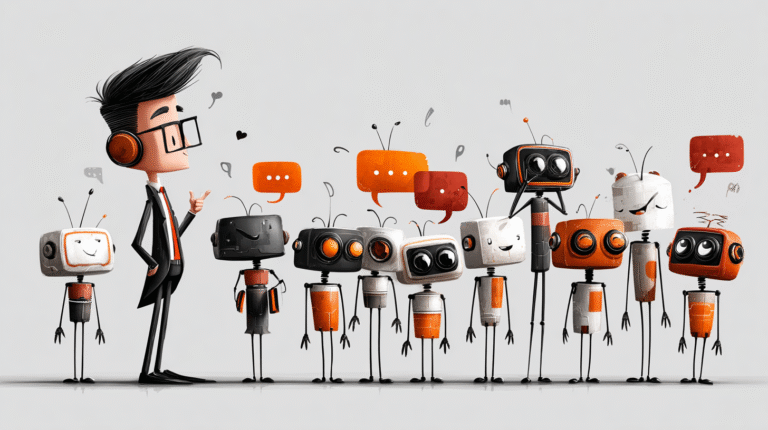LangGraph vs. Autogen vs. CrewAI: Which AI Agent Framework is Right for You?
Building an AI agent from scratch is no small feat, and the framework you choose can make or break your project. Whether you’re optimizing for flexibility, collaboration, or structured workflows, the right framework sets the foundation for how your AI agents operate. Today, we’re diving into three major frameworks: LangGraph, Autogen, and CrewAI. Let’s see how they stack up.
Why Frameworks Matter
AI agents need more than just a powerful language model; they require orchestration, memory management, and integration with external tools. The right framework helps developers streamline development, manage complexity, and ensure agents operate efficiently.
Picking the right one depends on your use case: do you need structured decision-making, conversational agents, or collaborative AI teams?
The Three Contenders
LangGraph: The Structured Workflow Pro
LangGraph treats workflows like directed graphs, meaning every step follows a structured path, making it ideal for complex decision-making processes.
- Best for: Multi-step workflows, applications that need to keep track of past steps, and AI systems requiring cyclical and dynamic workflows.
- Strengths: Strong visualization, seamless LangChain integration, robust memory management, and support for human-in-the-loop interactions.
- Challenges: Requires a solid understanding of graph structures; may be overkill for simpler tasks.
Autogen: The Conversational Multi-Agent Specialist
Autogen is all about real-time, dynamic collaboration between AI agents, making it a strong pick for chat-based applications.
- Best for: Multi-agent conversations, chatbot-driven automation, dynamic task execution, and API/code integration.
- Strengths: Easy multi-agent setup, modular design, support for Dockerized code execution, and adaptive workflows.
- Challenges: Less structured than LangGraph; requires additional setup for persistent state management.
CrewAI: The AI Team Builder
CrewAI structures AI agents into predefined roles, creating specialized, cooperative teams that can handle different parts of a workflow.
- Best for: AI teams where agents have distinct responsibilities and work together.
- Strengths: Excellent for task delegation, simple role setup, modular and organized, and supports external memory databases.
- Challenges: Less flexibility in workflow structure compared to LangGraph, and not as dynamic as Autogen for real-time interactions.
How Do Workflow Automation Tools Compare?
If you’re looking for a broader automation solution rather than a dedicated AI framework, tools like Make.com, n8n, Flowise, and LangFlow provide alternative approaches to orchestrating workflows.
- Make.com is a workflow automation platform that allows users to create and automate tasks by connecting different services. It excels at linking APIs and automating multi-step processes but does not yet have a confirmed AI agent builder. Although there are rumours that it’s coming soon.
- n8n is another automation tool that has recently introduced AI agent functionality with memory support, enabling more context-aware automation for AI-driven workflows and integrating with LangChain.
- Flowise is an open-source, low-code tool for building LLM workflows, making it a bridge between automation and AI. It allows users to visually orchestrate AI models and supports multi-agent systems via custom nodes.
- LangFlow is a visual tool similar to Flowise, designed for building, fine-tuning, and deploying workflows involving large language models. With strong integration with LangChain, it provides a flexible way to structure LLM-based applications.
While these tools provide flexible automation, they don’t offer the same AI-focused orchestration, memory management, or multi-agent collaboration features. If your priority is AI-specific task execution, LangGraph, Autogen, or CrewAI will be a better fit.
How to Pick the Right One
Choosing the right framework depends on the complexity and purpose of your AI agent. If you need structured, cyclical workflows with persistent state management, LangGraph is the best fit. For AI agents that require chat capabilities, API integrations, or dynamic code execution, Autogen offers a more flexible, multi-agent approach. If your project involves team-based AI agents with predefined roles and external memory support, CrewAI provides an ideal setup.
Each framework and automation tool has its strengths, and the best choice depends on how structured, conversational, or collaborative you want your AI agents to be. Start by defining your goals: do you need strict workflows, adaptable conversations, or a team approach? Or do you just need to automate general tasks? Once you know that, picking the right tool becomes a whole lot easier.
For a more in-depth comparison of these frameworks, check out Galileo.ai’s Mastering AI Agents ebook.







